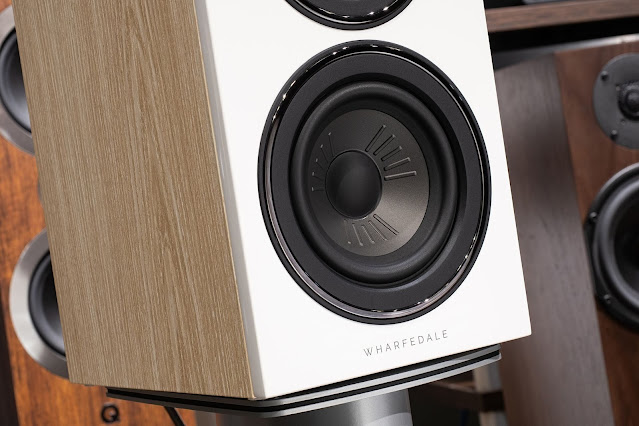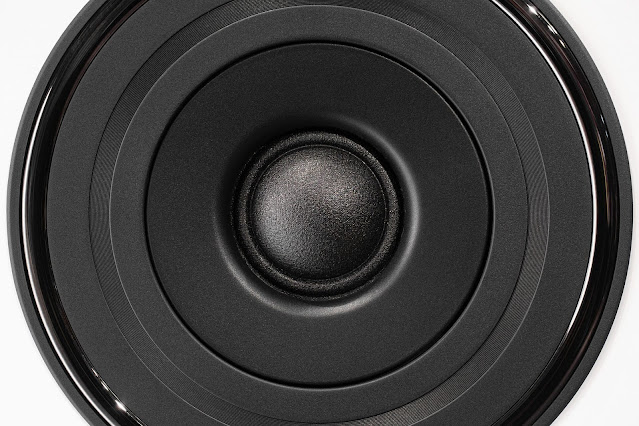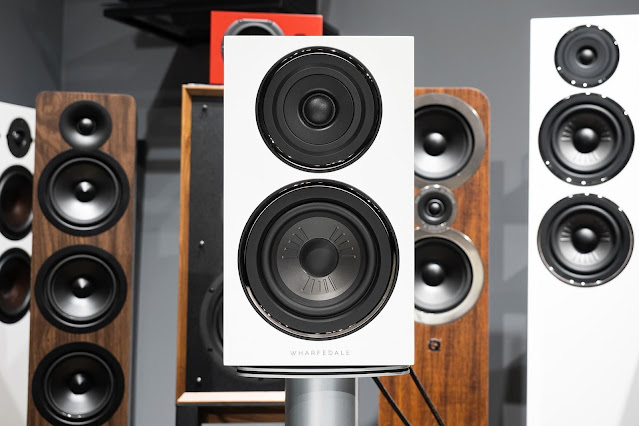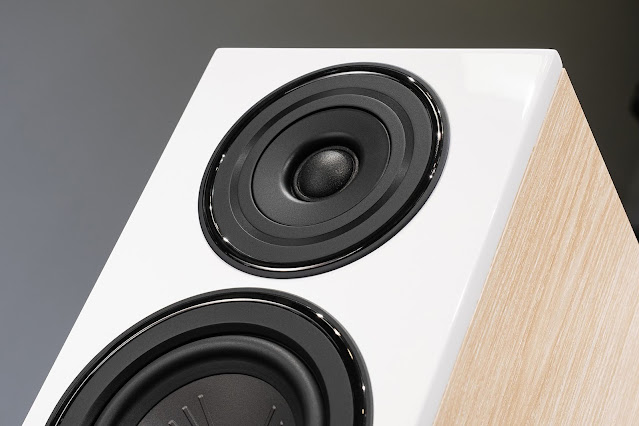Wharfedale Diamond 12.1 review
The Diamond series has been in the line of the British brand Wharfedale since 1981. At the time of its appearance, it was a truly revolutionary acoustics, combining the most modern technologies and materials, ultra-compact dimensions and affordable price. "Diamonds" of the early 80s made a great contribution to the popularization of Hi-Fi, making high-quality acoustics more affordable and more convenient in everyday life - it was not necessary to allocate half the living room for installing speakers.
Since then, Wharfedale has not stopped working on this line, and Diamond acoustics of different years has become an entrance ticket to the world of Hi-Fi for many novice music lovers and audiophiles. Nowadays, on the shelves of stores you can find acoustics with an index of 12, which unequivocally hints at how many generations of Diamond have changed over the past 42 years. And I recently got acquainted with the Wharfedale Diamond 12.1 shelf speaker.
Like the good old
The Wharfedale Diamond line traditionally includes the whole range of models - floor and shelf speakers of different sizes, as well as center channel acoustics. 12.1 is a medium shelf model. The caliber of the main radiator of 5 inches allows you to use it as part of a home theater, triphonics or as an independent stereo pair in a small room.
And, by the way, it was precisely this format - a compact, but quite self-sufficient two-way shelf speaker - that surprised the Wharfedale Diamond audience in the early eighties. And it turned out that this is far from the only reference to the first models.
In the twelfth generation, the developers abandoned the Kevlar, which was used as a mid/bass cone material and was the hallmark of the Diamond series for more than twenty years, and returned to polypropylene, from which the history of this series began.
To be precise, the new material, called Klarity, is a composite consisting of polypropylene and mica embedded in its structure. Such a specific filler made it possible to significantly improve the ratio of lightness and rigidity.
The diffuser cone was additionally reinforced with stiffeners, and the outer rubber suspension was selected in such a way that it gives the diffuser free play as much as possible and does not load its edges even during intensive work. By making the cone light and resistant to deformation, the developers have improved the linearity and response speed of the emitter, and also rid the sound of coloration.
With the "motor" mid-bass, they also thoroughly worked. An aluminum Faraday ring was introduced into the magnetic system, which equalizes the induction, and the voice coil frame was made of fiberglass impregnated with epoxy resin.
Such a frame is stronger than kapton or paper, which are usually used in budget series speakers. Usually fiberglass is used in much more expensive designs, but the Wharfedale engineers decided that an improved voice coil cage would make a significant positive contribution to the sound.
The tweeter has a dome of a standard caliber 25 mm, made of polyester fabric with a special impregnation that equalizes and expands the frequency range. To minimize the effect of air compression under the dome, a ventilated magnetic system is used.
The tweeter flange forms a shallow waveguide, which allows you to avoid re-reflections from the front panel, but does not significantly affect the sound dispersion in general. Band matching is provided by filters with a high cutoff slope of 24 dB, due to which there should be no porridge and accentuation in the 2.6 kHz docking area. The design of the crossover uses coils exclusively with air cores, as in top models. This was necessary in order to make the low frequencies sound faster and clearer.
Surprisingly thoroughly, the developers approached the design of the case: small-looking speakers turned out to be quite heavy. The reason for this is the two-layer walls. Moreover, the glue used for gluing the layers was selected based on its ability to dampen resonances. But even this was not enough.
In order to completely get rid of body overtones, reinforcing ribs are installed inside, the locations of which were found using computer simulation methods. By making the cabinet acoustically inert, Wharfedale engineers have minimized the distortion and cabinet overtones that are common with budget speakers.
Hi-tech and old school
Before moving on to how all the above-mentioned technological innovations affected the sound, I will share the results of an external examination, which must be accompanied by a photo. The design of the building as a whole corresponds to modern trends - a plain facade with a “wood-like” finish of the rest of the body.
The quality of workmanship and fitting of parts does not cause any complaints, just as the origin of the "wooden" finish is beyond doubt - everything is absolutely honest here. A pretty vinyl film does not pretend to be authentic in terms of pattern and texture.
Large speaker flanges give the appearance of solidity. The thick front panel, installed with a “gap” relative to the main part of the body, and the cleanest front part without screws and holes for mounting the grill contribute to the same. In a word, Diamond 12.1 looks more expensive than it actually costs.
With an absolutely modern design of the facade, the developers decided to install the back wall of the column in the old fashioned way and even used the same color as the front panel for its decoration. Probably, in this way they wanted to show the thickness of the walls, but from the point of view of design, it turned out to be eclectic: high-tech in the front, and old school in the back.
However, much more attention should be paid to the terminal block. This is a signature Warfedale design that I first saw on the Denton 80th Anniversary retro model (not to be confused with the Denton 85th now on sale).
In addition to its eye-catching appearance and rugged metal housing, this terminal block is particularly good at connecting bare, bare or spade cables. With this arrangement of the terminals, it is much more convenient to twist them than the standard ones, which are a few millimeters apart.
Preparatory procedures
Before I started listening, I spent some time looking for the best position. Diamond 12.1 scatter the sound quite evenly and with the task of background sound or when working as rear channels, they will prove worthy. However, by pointing the tweeters at the listener and using high stands or sloping pedestals so that the mid/bass driver is a little closer to the listener, more precise spatialization and a more solid sound in the lower range can be achieved.
With this approach, the Diamond 12.1 immediately ceases to seem like unobtrusive background acoustics and manifests itself as serious mini-monitors. Due to the realistic transmission of the upper harmonics, Diamond 12.1 reproduces the middle bass quite effectively, but the sound pressure and density at the bottoms is far from always enough, so to complete the experience, you either need to connect a subwoofer or reduce the distance to the speakers, as I did during the testing process.
New impressions
Over a very long "Kevlar" period, I have already become accustomed to the fact that the Wharfedale Diamond is an acoustic that plays rock perfectly, so the listening began with the classic examples of this genre. And the "twelfths" immediately pleasantly pleased with the rhythm and energy of sound. The scene was drawn surprisingly voluminous and accurate. The only thing missing was the scale, due to the lack of lower bass.
We were pleasantly surprised that without some extraordinary resolution that goes far beyond the price range, Diamond 12.1 sound very transparent and retain intelligibility even at difficult moments. So, for example, the chorus of children's voices in "Another Brick In The Wall pt.2" does not stray into an unintelligible mess. Each voice is clearly drawn and just as clearly located in space.
Further, as I pored over a selection of classic rock, I became more and more convinced that the Diamond 12.1 handled it very well. As a result, I moved to other genres with some apprehension. But the sound of modern improvisational music of the free jazz and free rock styles began to break the pattern that had developed over the decades.
Complex polyphony was practiced as confidently as simple melodies, multi-layered rhythmic patterns were reproduced flawlessly. In addition, the rate of fire and the accuracy of the response of the speakers to sharp bursts of the signal appeared in all their glory. As a result, the metal also sounded decent, which is an excellent result considering the price category.
These shelf speakers showed themselves very interestingly on acoustic music, vocals and jazz. The transparent, open and bright sound of the Diamond 12.1 is not a drop of harshness or excessive brightness. The recordings, which contain very vicious and annoying sibilants, sounded quite comfortable. And, by the way, compression artifacts when trying to listen to Internet radio also did not climb to the fore and did not irritate. From these observations, only one conclusion can be drawn: someone worked very competently with the frequency response.
On any musical material, Diamond 12.1 showed a clean, transparent and well-balanced sound, devoid of annoying accents. The stage and volume were felt to the extent that they were written in the recording, without artificially inflating the sound image. And in general, the columns were very accurate and pedantic.
The fact that the Diamond 12.1 belongs to the entry-level models reveals only the absence of subtle nuances and richness of timbres when listening to audiophile recordings, and on simpler music it is not always possible to determine which price category this model belongs to.
verdict
The creators of the 12th generation Diamond line were extremely competent in the implementation of literally every structural element, combining traditional budget solutions with materials and components typical of higher segment acoustics.
Thanks to this approach, Diamond 12.1 embodies an excellent combination of price, sound quality and compactness. Like back in the eighties.
Pros
dynamic, accurate and well-balanced sound, voluminous stage, comfortable presentation of any musical genres, convenient connection terminals
Cons
absent (including cost)
OFFICIAL SITE
Wharfedale Diamond 12.1 specifications
Acoustic design: phase inverter
Number of stripes: 2
Tweeter: 25 mm, fabric dome
Midrange/woofer: 130 mm, mica polypropylene
Frequency range: 65-20000Hz (+/-3dB)
Crossover Frequency: 2600Hz
Impedance: 8 ohm
Sensitivity: 88 dB
Recommended Amplifier Power: 20-100W
Dimensions: 312x180x250 mm
Weight: 6.8 kg






















.jpg)



0 Comments